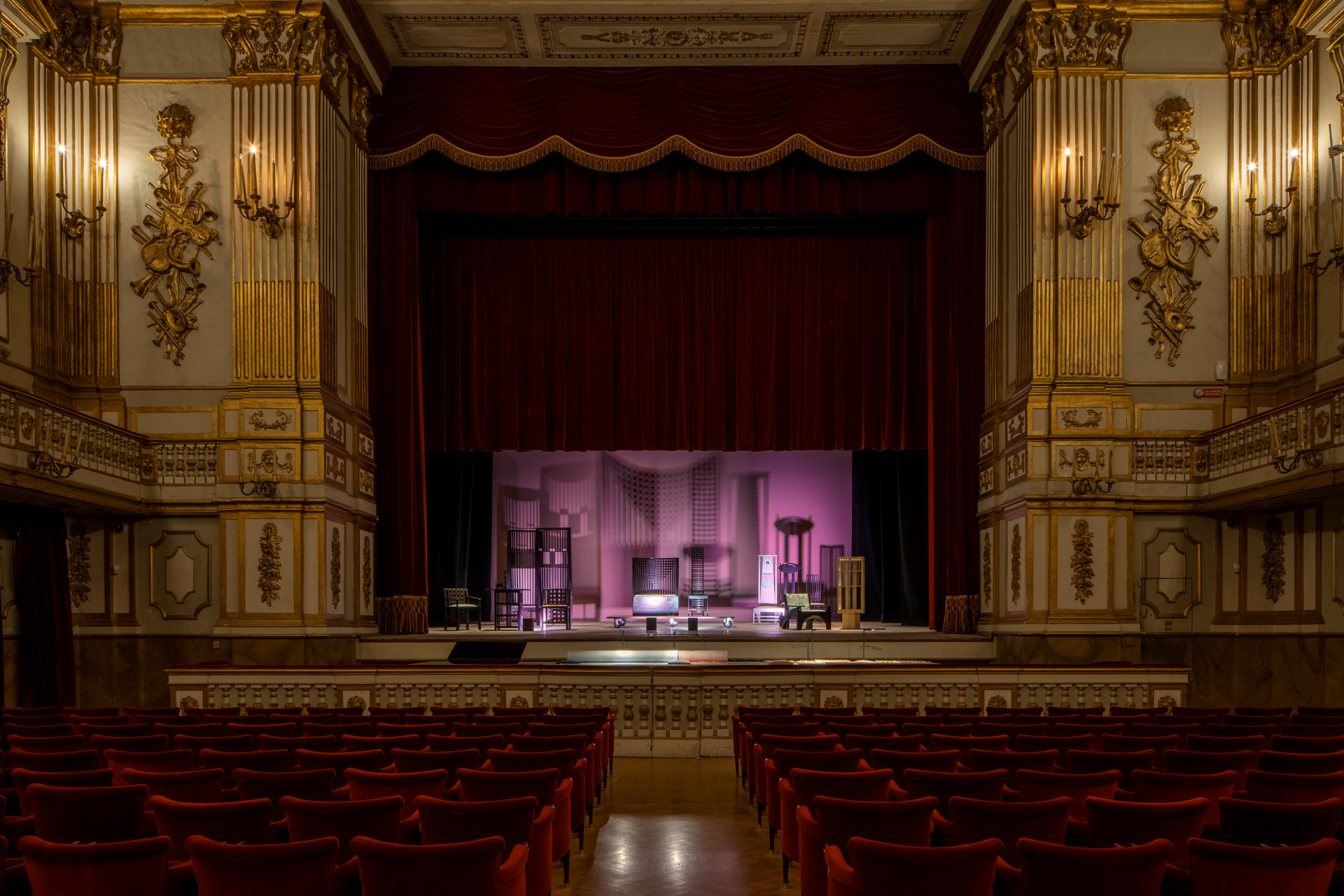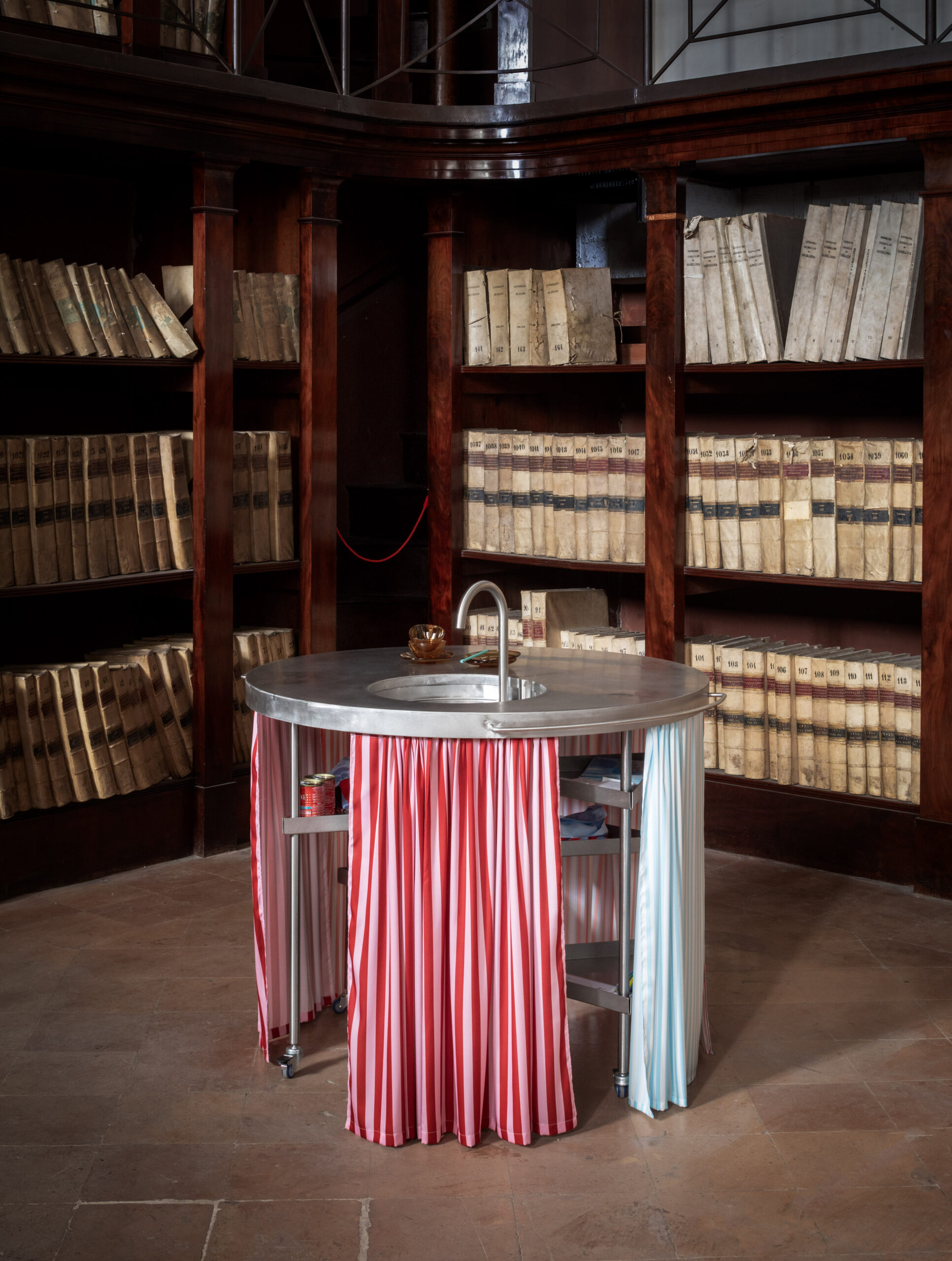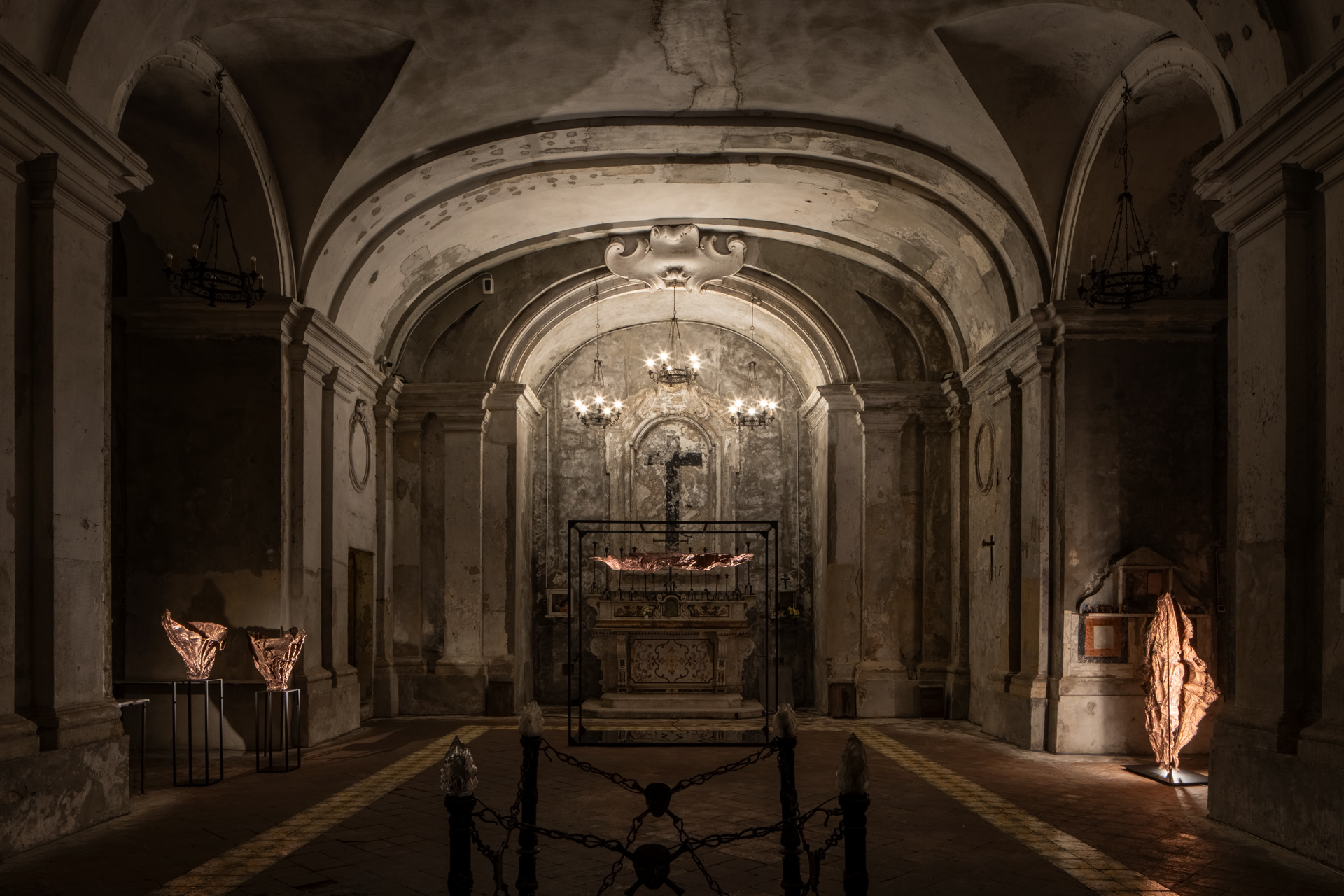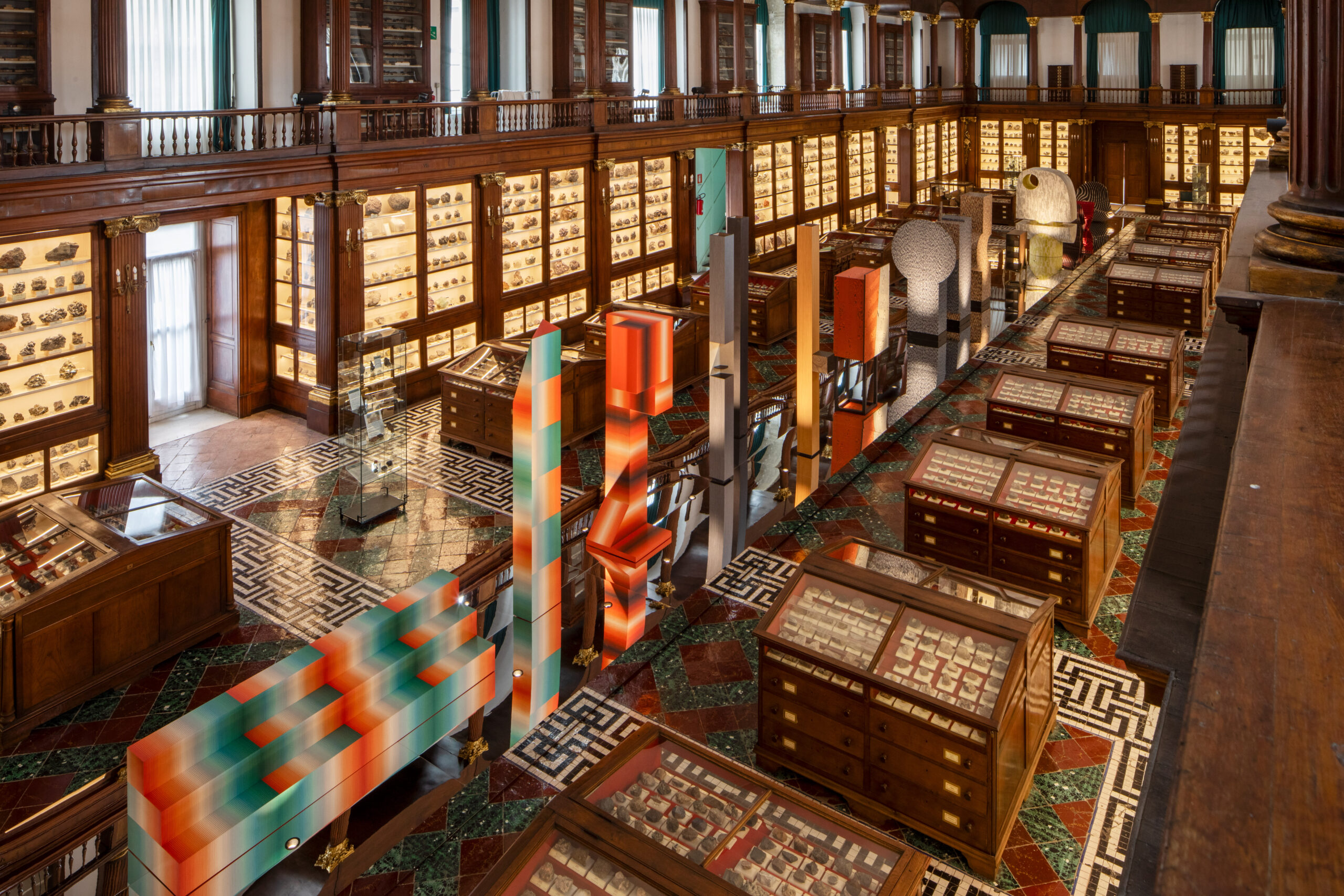Returning for its sixth edition, EDIT Napoli once again put a spotlight onto independent designers, featuring over 100 creatives and seven installations across the city.
 EDIT Napoli returned for its sixth edition this month featuring installations in prestigious venues across the city such as this retrospective display of works from Cassina’s iMaestri Collection, designed by Charles Rennie Mackintosh. Photography: Eller Studio
EDIT Napoli returned for its sixth edition this month featuring installations in prestigious venues across the city such as this retrospective display of works from Cassina’s iMaestri Collection, designed by Charles Rennie Mackintosh. Photography: Eller Studio
Words by Roddy Clarke
With the charm and magnetic dynamic of the city emanating throughout the three-day design fair, EDIT Napoli returned with flair, elegance and style. Taking place earlier this month (11th -13th October), it brought together over 100 designers at the fair’s hub, the Archivio di Stato, as well as featuring seven CULT installations, held in prestigious locations across the city. The fair once again focused on independent designers from around the world with different collaborators coming together for the unique shows placed around the city.
 The curators of EDIT Napoli, Domitilla Dardi and Emilia Petruccelli. Photography: Eller Studio
The curators of EDIT Napoli, Domitilla Dardi and Emilia Petruccelli. Photography: Eller Studio
A refreshing alternative to the more established, and often overwhelming, design fairs that remain prominent in the industry calendar, EDIT Napoli is a consciously curated event that is led with intention and purpose thanks to the commitment and vision of its founders; Domitilla Dardi and Emilia Petruccelli. And, with the event celebrating the creativity and culture of the region as much as the design showcased within it, the synergy between global creativity and a local narrative brings added verve to the annual event. “The city has been contemporary throughout its history,” says Dardi, “precisely because it is connected to international communities. The many intellectuals from abroad who found their home here over time are proof of this.” With the global diversity represented in the talents showcased, it facilitated an array of dialogues to emerge behind each project and installation. “Six years on from the first edition, we are proud to say that we have always believed in this city and seen its potential,” comments Petruccelli, while also speaking of the consistent 20% growth in exhibitors that has occurred year on year. “The events, the companies and the initiatives which gravitate around it are confirmation of this.”
With a wealth of projects, innovation and talent grabbing our attention, here are six highlights that offer a glimpse into the creativity that was on display:
Ballerina by M’ama edizioni
Led by interior designer Federica Zama, the Italian furniture brand M’ama edizioni was set up in 2023 as an addition to the designer’s existing interior studio M’ama interni +. This year, Zama presented her latest creation Ballerina – a stainless steel, modular kitchen island. Structured around a central cylindrical sink, the revolving island is designed to be used indoors or out thanks to its material properties and adaptable configuration. Perfect for transient living and indoor-outdoor environments, the system is allowing us to rethink the kitchen as a space that can be flexible, personal and playful. Complete with a curtain skirt placed on a runner around the island’s edge, its future-focused design and contemporary aesthetic certainly left a positive impression.
 Ballerina by Federica Zama is a modular, moveable kitchen island designed for indoor and outdoor use. Photography: Eller Studio
Ballerina by Federica Zama is a modular, moveable kitchen island designed for indoor and outdoor use. Photography: Eller Studio
Galateo Ancestrale by Caterina Roppo and Incalmi
Displayed in the Complesso Museale Santa Maria delle Anime del Purgatorio ad Arco, this collaborative research project between artist Caterina Roppo and Italian studio Incalmi was a stand-out highlight from the three-day event. With Roppo’s textile creations inspired by the act of breathing, this took her practice in a new direction thanks to the expertise of Incalmi. In coating her creations with copper, which then acquired the form of the textiles, it resulted in sculptural works that appeared to have the movement of fabric yet were solid in form. Through the combination of materiality and process, these exquisite creations felt alive only to be further enhanced by the setting in which they were placed.
 The collaboration between Caterina Roppo and Incalmi pushed the boundaries of material innovation resulting in static works of art that had the visual movement of textiles. Photography: Eller Studio
The collaboration between Caterina Roppo and Incalmi pushed the boundaries of material innovation resulting in static works of art that had the visual movement of textiles. Photography: Eller Studio
Crystal Flower Installation by Lucie Claudia Podrabska
Alongside a series of 14th Century-inspired glass goblets, Czech designer Lucie Claudia Podrabska displayed a portion of her crystal flower installation which invited viewers to consider the environmental pitfalls of the floral industry through the magical interplay of light and form. Placed inside a mirrored steel base, delicate cut glass flowers contrasted the industrial form of the base highlighting the delicate balance between nature and the commercial world we live in. Thoughtful, provocative and exquisite, this was a reminder of how art and design can constructively raise awareness and be a valuable contributor towards change.
 Lucie Claudia Podrabska displayed a portion of her Crystal Flower Installation which alludes to the environmental pitfalls of the cut flower industry. Photography; Simon Leung
Lucie Claudia Podrabska displayed a portion of her Crystal Flower Installation which alludes to the environmental pitfalls of the cut flower industry. Photography; Simon Leung
Shiwa Shiwa by Kengo Kuma for Alcantara
Designed as the set for Giuseppe Verdi’s opera ‘Simon Boccanegra’, this striking installation graced the stage of the iconic Teatro San Carlo. Conceived by Japanese architect Kengo Kuma for Italian textile manufacturers Alcantara, visitors were allowed into the theatre to witness the magical display of material that offered depth and movement thanks to its placement and shaping. Adding extra dynamism to the performance, it amplified the sensory experience while beautifully contrasting the ornate period interior features of the theatre itself.
 This breathtaking backdrop by Kengo Kuma for Alcantara beautifully juxtaposed the ornate interior architecture of Teatro San Carlo. Photography: Eller Studio
This breathtaking backdrop by Kengo Kuma for Alcantara beautifully juxtaposed the ornate interior architecture of Teatro San Carlo. Photography: Eller Studio
B1 Stool by Sofia De=Francesco
Based in Porto, the multidisciplinary designer Sofia De=Francesco unveiled her latest design – the B1 Stool. Based on modernist architectural references and fusing juxtaposed materials together in one piece, the stool oozed sophistication thanks to its clean lines, structured silhouette and elevated form. Finished in a walnut veneer with the sides cladded in aluminium, the stool could easily be placed within both domestic and commercial settings as well as working in both classic and contemporary schemes. With it bridging the gap between traditional techniques and modern manufacturing, the designer’s meticulous attention to detail was perfectly portrayed in this creation.
 Sofia De=Francesco’s architectural design sensibilities results in her designs having an elevated, contemporary aesthetic. Photography: Maria Medici
Sofia De=Francesco’s architectural design sensibilities results in her designs having an elevated, contemporary aesthetic. Photography: Maria Medici
Along the Edge – ALPI 1984-2024 by ALPI Wood
Pioneers of reconstituted wood decorative surfaces, ALPI celebrated its 40th anniversary at EDIT Napoli with a retrospective installation at the Real Museo Mineralogico. Displaying an array of works from the last four decades that were created in collaboration with international designers, it showcased the innovation and craftsmanship of the Italian firm. On display were wooden totems by Konstantin Grcic, prisms by Angelo Mangiarotti and works by Alessandro Mendini amongst others. Set amongst glass display cases of crystal and mineral forms, it again brought a unique dialogue and dynamic to the exhibition.
 ALPI’s retrospective exhibition displayed works from the last 40 years by an array of international designers. Photography: Eller Studio
ALPI’s retrospective exhibition displayed works from the last 40 years by an array of international designers. Photography: Eller Studio
Get a curated collection of design and architecture news in your inbox by signing up to our ICON Weekly newsletter


















